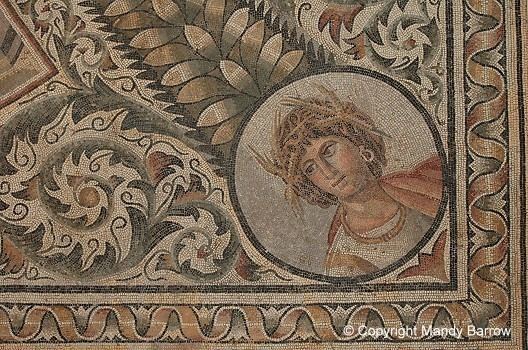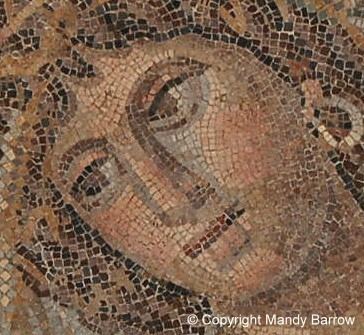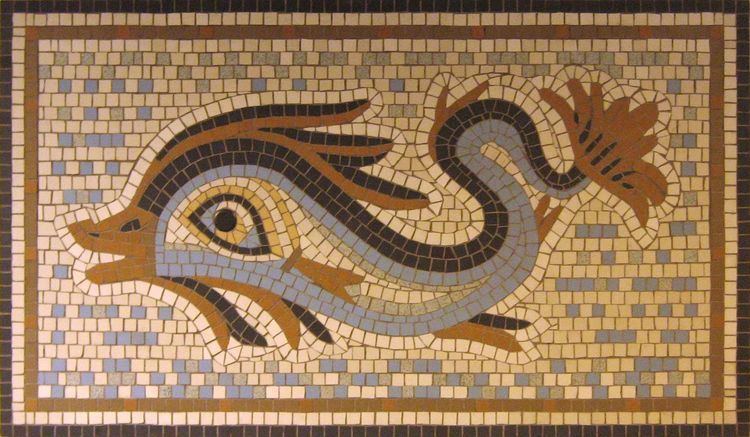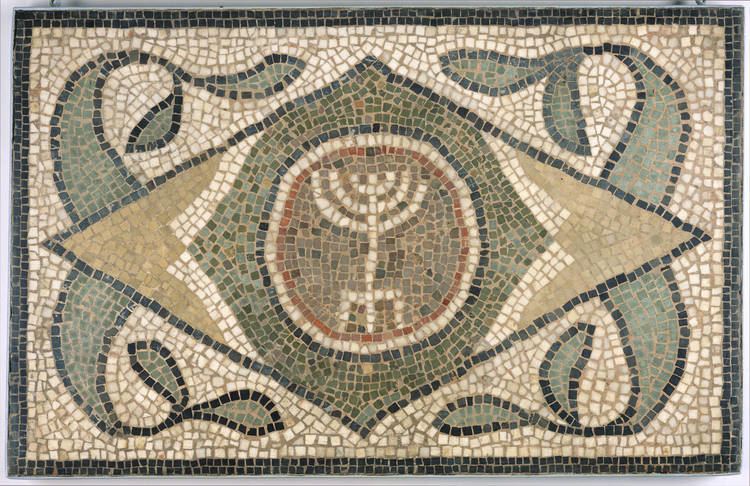 | ||
Early roman mosaic
A Roman mosaic is a mosaic made during the Roman period, throughout the Roman Empire. Mosaics were used in a variety of private and public buildings.
Contents
- Early roman mosaic
- Enormous roman mosaic unearthed in turkey video
- Development
- Technology
- Imagery
- Portraits
- Religion
- Emblems
- Notable examples
- References

Enormous roman mosaic unearthed in turkey video
Development

The earliest examples of Roman mosaic flooring date to the late Republican period (2nd century BC) and are housed in Delos, though tessellated pavements were used in Europe from the late fifth to early fourth centuries BC.

The outstanding examples of the Late Imperial period are the mosaics in the villa of Casale (c. 300 AD) in Sicily. The mosaic decoration of the local palace complex culminates in the gallery, which contains a scene of animal hunting and fighting covering an area of 3,200 square feet (300 m2).
Technology

Roman mosaics are constructed from geometrical blocks called tesserae, placed together to create the shapes of figures, motifs and patterns. Materials for tesserae were obtained from local sources of natural stone, with the additions of cut brick, tile and pottery creating coloured shades of, predominantly, blue, black, red, white and yellow. Polychrome patterns were most common, but monochrome examples are known. Marble and glass were occasionally used as tesserae, as were small pebbles, and precious metals like gold. Mosaic decoration was not just confined to floors but featured on walls and vaults as well. Traces of guidelines have been found beneath some mosaics, either scored into or painted onto the mortar bedding. The design might also be pegged out in string, or mounted in a wooden frame.
The collapse of buildings in antiquity can, paradoxically, both irrevocably destroy mosaics or protect and preserve them.
Imagery
As well as geometric patterns and designs, Roman mosaics frequently depicted divine characters or mythological scenes.
Portraits
Imagery of famous individuals or entertaining scenes are common on Roman mosaics. The Alexander Mosaic from the House of the Faun, Pompeii depicts the Battle of Issus between Alexander the Great and Darius III. In addition to famous people from antiquity, mosaics can depict aspects of daily life. The Gladiator Mosaic from Rome depicts a fighting scene, naming each gladiator involved. A gladiatorial scene is also known from Leptis Magna.
Religion
One of the earliest depictions of Roman Christianity is a mosaic from Hinton St Mary (in Dorset, England) which shows Christ with a Chi-Rho behind his head. The mosaic is now in the British Museum.
Emblems
Progression within the mosaic technique developed the emblem, the "heart" of all mosaics. The word emblem is used to describe a small mosaic featuring a little genre scene or still life, characterised by particularly thin tesserae made separately and mounted in a central or important position in the main panel.
